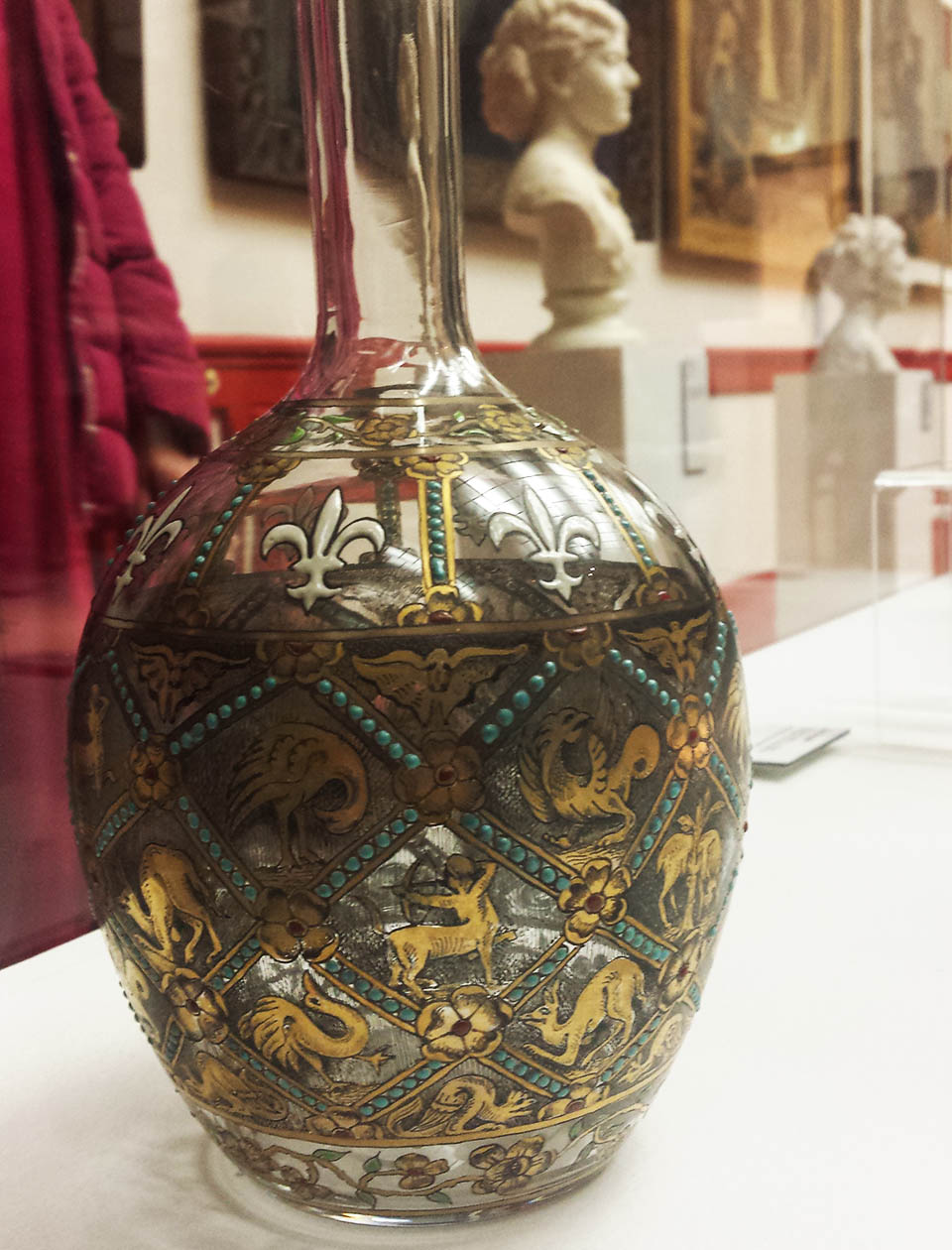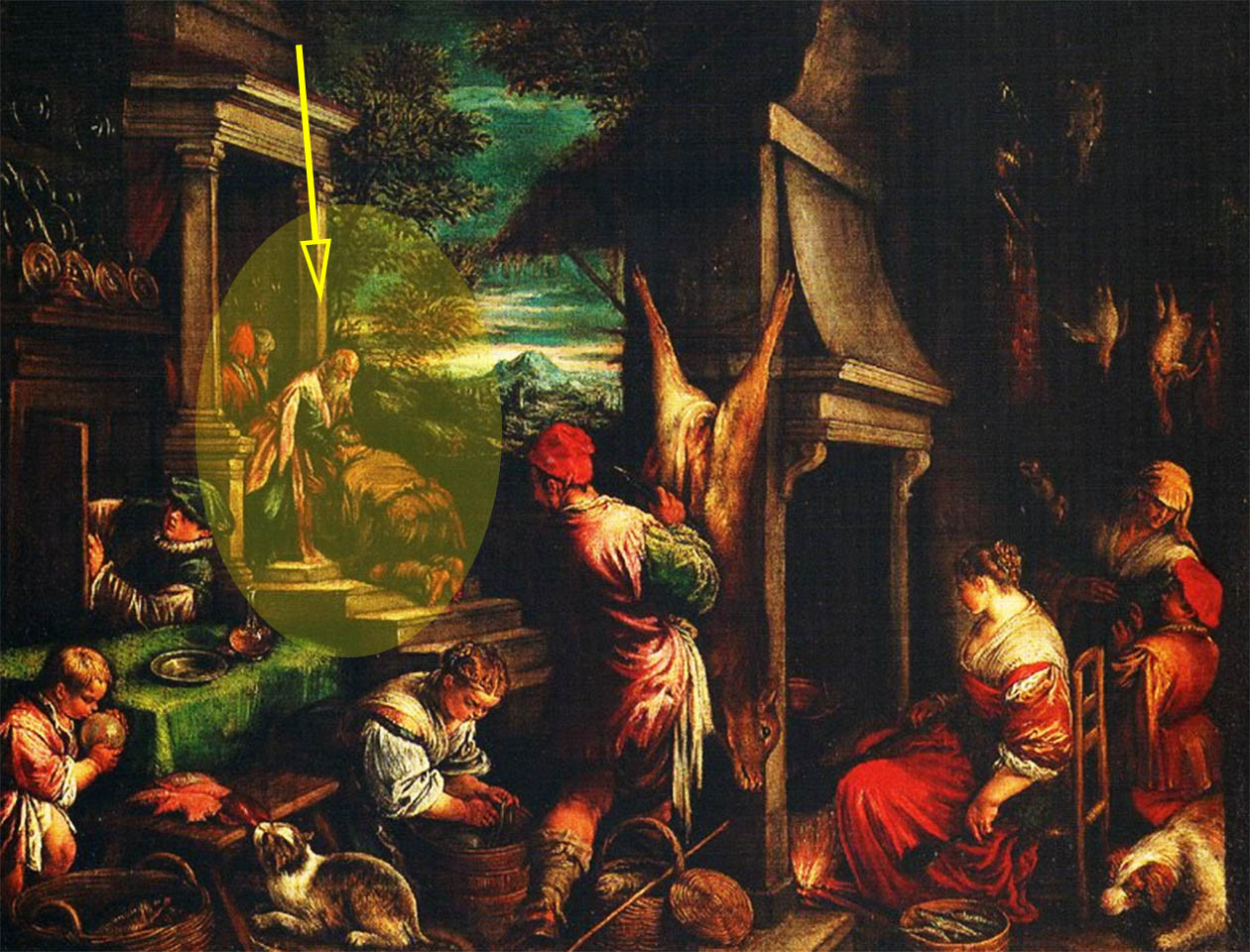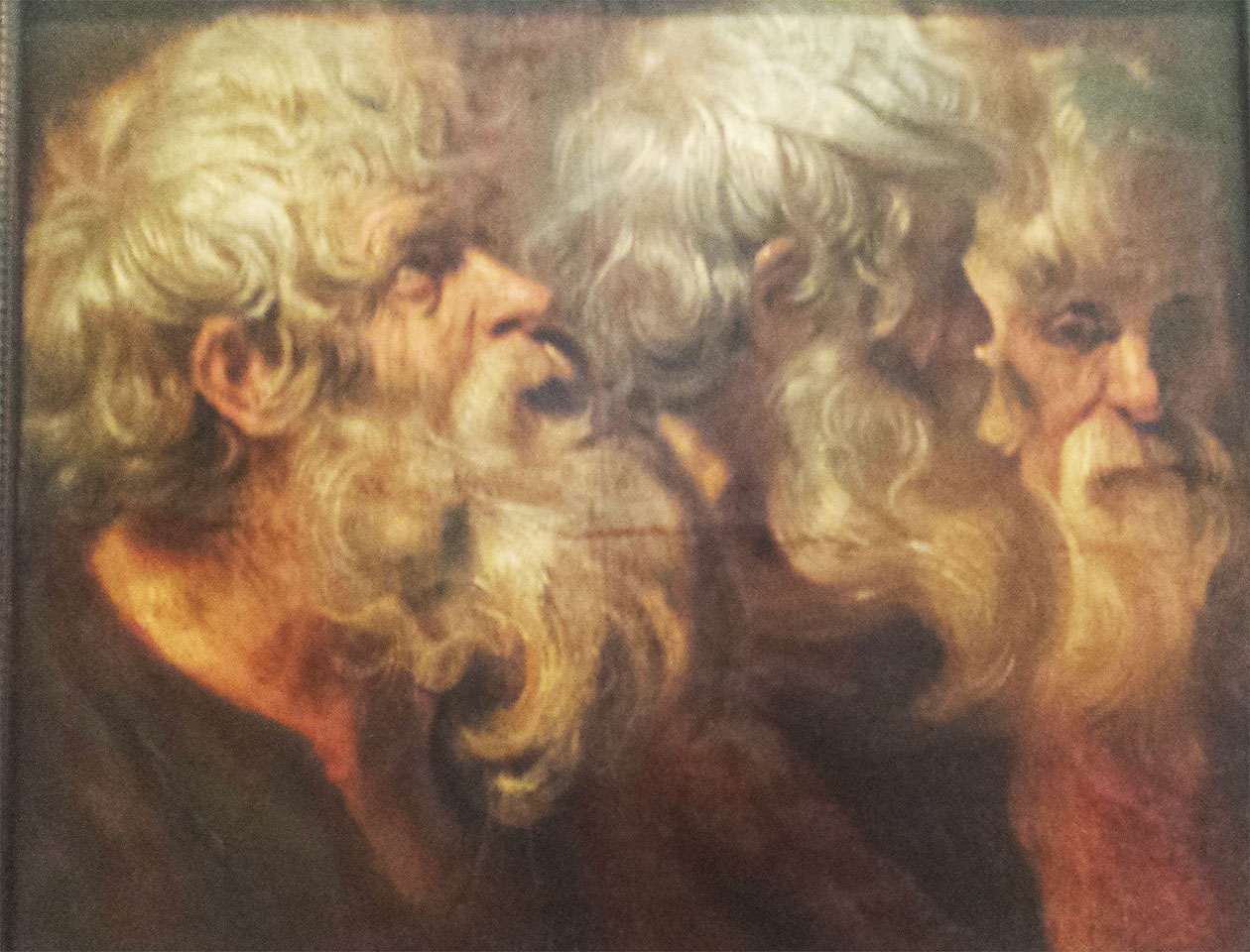Have you ever heard about Manfredi's work of art in Libourne museum?
The Fine Arts museum in Libourne was created by Duke Decazes. The Libourne Museum is rather small but it offers visitors a beautiful collection of works from the 14th to the 20th century. Among them, a rare and wonderful Renaissance painting by Manfredi...
The Fine Arts museum in Libourne was created by Duke Elie Decazes (1780-1860). The Fine Arts museum in Libourne is rather small but it offers visitors a outstanding collection of masterpieces from the European schools from the 14th to the 20th century. From 1818, when he became Minister of the Interior under Louis XVIII, he had art masterpieces sent to Libourne that would be the first State deposits and the museum's starting fund. Throughout the 19th and 20th centuries, the museum was considerably enriched by donations, legacies, purchases and deposits.
Among these art pieces, I draw your attention to this superb painting depicting Jesus chasing the merchants from the temple signed by Manfredi.
So who's Manfredi?
Bartolomeo Manfredi (1582-1622) is an Italian painter who has been said to be a follower ofLe Caravage without any evidence that the two men ever met... Manfredi's particular technique seems to be quite inspired by the Master. We find in particular the taste for chiaroscuro, the absence of scenery and tightened frames. A perfectly mastered technique that was qualified at the death of the painter as "Manfrediana methodus" (Manfredi's method).
He is one of the first emulators of the innovative Caravaggio style, with his strong chiaroscuro, and his emphasis on naturalism, with a gift for telling a story through the expression and body language of his characters.
Despite a short career, Caravaggio reached glory around 1600; he had to go into exile in 1606 and died four years later. He had a great influence on the artists of the following generation, especially in Rome and Naples. Among these artists nicknamed "caravaggesques", i Manfredi s surely the one who has been the most effective in transmitting the master's legacy to foreign painters.
His painting is opposed to a painting that is too theoretical, a bit like a reaction to a painting from the Renaissance. He returns to something more realistic with models that he will look for in the streets.
The Manfredi of Libourne: Jesus chasing the merchants from the temple
This 1.67 by 2.44 metre oil painting arrived in Libourne in 1819, in the State depot at Saint-Jean-Baptiste Church. Preserved in conditions that were not really optimal, it had already been restored when it entered the Fine Arts Museum in the 1980's. It has thus joined the very rare collection of Manfredi's works in France: one in the Louvre, the other in Libourne (Gironde) and the third... in Le Mans (the one in Le Mans first discussed was authenticated in 2016).
The internationally renowned work of the Italian Bartolomeo Manfredi "Jesus chasing merchants from the temple" left the Libourne Museum of Fine Arts in the autumn of 2016 to join the Metropolitan Museum in New York as part of the retrospective devoted to Valentin de Boulogne, a Manfredi's contemporary. Before crossing the Atlantic, the painting passed through Tiziana Mazzoni's hands for a new restoration, partially financed by the Metropolitan.

"We are lending it free of charge to the MET, which has participated in its recent restoration."
explains Thierry Saumier, director of the Fine Arts Museum, who went to New York for the opening of the exhibition (2017).
But just figure out this is not the first trip of the painting that has already been exhibited twice in Rome and once in Los Angeles in 2012!
But that's not all... at the Libourne Museum, I also invite you to pay attention to some other works of arts such as:
 The Giboin collection
The Giboin collection
Alphonse Giboin was known for his enamelled glasses... The Giboin collection (1828 - 1921) is one of the curiosities of the Libourne Museum.
At the end of the 19th century, this cultured man retired in Libourne, demonstrated his mastery of enamel on glass techniques. He created glassware objects inspired by the Arab-Persian art, Japan or the historicism in vogue at that time. His correspondence testifies to numerous exchanges with the painters of that time. Eclecticism is a word that fits perfectly to talk about Giboin's art, although the Libourne artist excelled in the Islamic style. Unlike some of his contemporaries, Giboin did not seem to have shown any interest in the motifs of art nouveau and preferred geometric motifs and arabesques to them.
Bassano, one of my favourites that can also be discovered in Bordeaux Fine arts museum
Bassano is a family of painters who had a very productive workshop in Italy during the Renaissance period. A great constant is their taste for landscape and country scenes... The problem is that, at that time, what was lucrative but also rewarding for an artist was the religious painting. There was a hierarchy in the art of painting and religious painting was at the top of the pyramid!
problem is that, at that time, what was lucrative but also rewarding for an artist was the religious painting. There was a hierarchy in the art of painting and religious painting was at the top of the pyramid!
Facing a Bassano, one can only admire the genial way in which they have managed to sit on the fence... the painting often bears a religious title, The Return of the Prodigal Son in our case of Libourne Museum... but in reality the biblical scene is often somewhere in the background or in some corner of the painting to give priority of "genre painting" (=everyday life scenes) or animal scenes in the foreground.
Here again, the main scene is rejected in the background, on the left: the father, standing on the threshold of his house, welcomes his son kneeling in front of him. The foreground is occupied by a genre scene: in a wealthy peasants home, everyone is busy with a particular task, in the preparation of the meal.
Princeteau, the animal painter who was Lautrec's master
Coming from a rich Libourne family, the artist knew the success thanks to his exceptional talent for painting racehorses! Despite his disability (he was deaf and dumb by birth), he managed to have a fine career as a worldly painter in high society in Paris. Toulouse-Lautrec's friend and teacher , he was always very admired by his brilliant student. But Libourne's collection shows that Princeteau was not only the chronicler of equestrian elegance but also a great portrait and landscape painter.
In the second room, an entire wall is dedicated to him. Don't miss the Uhlans' patrol canvas or the oxen on the way back from the harvest (Arrival at the grapes press).
Rodin, but yes believe me... a Rodin in Libourne!
And yes....... In Libourne, in this very small museum, you can find a Rodin's sculpture ! Rodin is indeed one of the most important French sculptors of the second half of the 19th century, considered as one of the fathers of modern sculpture!
You may recognize Aesculapius. Aesculapius is the Roman equivalent of the Greek god Asclepius. Son of Apollo and Coronis, only daughter of Phlegias, king of Boeotia, Aesculapius was born on Mount Titthion in the Peloponnese. As the word in Greek means "crow", it was said that Aesculapius was born from an egg of this bird, under a snake shape.
The way the god Asclepios holds the woman in his arms is reminiscent of the traditional representations of a Pietà holding her son. Some see here the influence of Michelangelo's work.
Jordaens portrait study (triple study)
His entire career took place in Antwerp, where his success was such that he received orders from all over Europe ! At no time in his career did Jordaens suffer from a lack of esteem. Jordaens was more a collaborator than a student of the master and worked for twenty years alongside Rubens. With the Rubens and Van Dyck deaths, Jordaens was considered the most important painter in the southern Netherlands.
On an ochre-brown background, stands out the figure of an old man with a merciless realism and deep wrinkles. Maybe this is a study for an apostle? We see a subject with a collected attitude, eyes turned to the sky, mouth ajar as if whispering a prayer...
And if with all this I haven't convinced you to take a detour to the Libourne Museum of Fine Arts,
I can always add one last important argument: Entrance is free of charge!!!!
Thanks a lot for reading 'til the end.
Don't forget to download the complete .pdf file for your next tour to Libourne fine arts museum !
And if you want to discover Libourne with me, just click here!
-
 Bordeaux Cognac tour guide
Bordeaux Cognac tour guide -
 Marie Hallier - Bordeaux Cognac Tour Guide - TéléProTour
Marie Hallier - Bordeaux Cognac Tour Guide - TéléProTour -
 @Bordeaux.cognac.tour.guide
@Bordeaux.cognac.tour.guide -
 @Teleprotour
@Teleprotour -
 Marie HALLIER
Marie HALLIER
South of France, Licensed Bordeaux tour guide, Bordeaux tourist guide, Bordeaux guided tours, Unusual Bordeaux Tours, Licensed Tour Guide


Terms & Conditions
Report